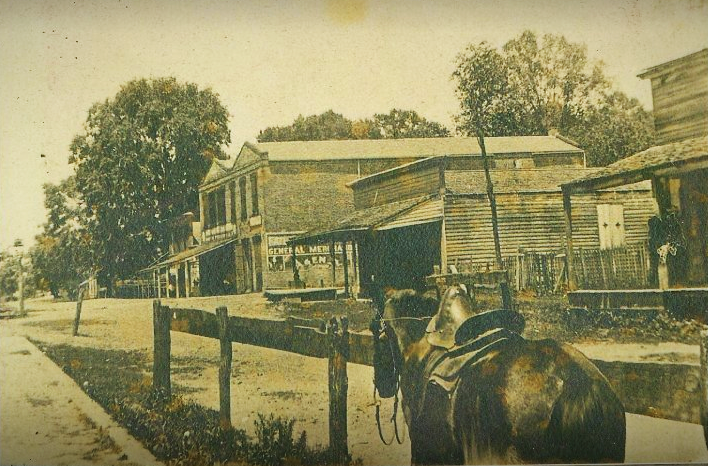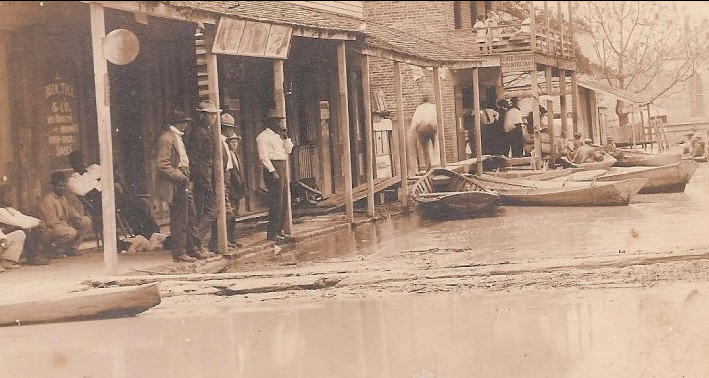...And there's a Delaware connection! (see below)
-----------
Rodney, Mississippi
Population: 0

On a recent trip, we heard of a nearby ghost town, Rodney, Mississippi, 32 miles northeast of Natchez.

This town has a very interesting history. Given its close proximity to the Mississippi River it was the busiest river port between New Orleans and St. Louis in the mid-1800's. The Natchez and Robert E. Lee steamboats made Rodney one of their chief ports of call.
It was also a cultural center on the Mississippi frontier. Among the businesses fronting on Commerce and Magnolia Streets were banks, wagon makers, tinsmiths, barbers, doctors, dentists, general mercantile stores, hotels, saloons, a park and pastry shops. For cultural activity there were artists, theater, a lecture hall, schools, debating society, churches, jockey club, two newspapers, and thespian groups. It was also home to Mississippi's first opera house and college (Oakland college). It's population swelled to over 4,000 people and was being considered as the location of the Mississippi Territory capital.
Rodney was also host to many notable visitors, including Andrew Jackson, Henry Clay and Zachary Taylor (who was so taken by the area that he purchased Cypress Grove Plantation, complete with 81 slaves, in 1840.. which later eroded away into the Mississippi).

The future looked bright for this ambitious town, but then something unexpected happened: Mother Nature intervened...
The Mississippi river abruptly changed course moving its shores two miles to the west leaving this up and coming town, high and dry. Businesses began closing, people moved away and the town slowly evaporated leaving nothing behind but the few deserted buildings that still (barely) stand today.
This is Commerce Street, once the busy thoroughfare of the town. Buildings, now long gone, lined both sides of the street.
To the right is an old store.



Across the street is the First Presbyterian Church of Rodney dedicated in 1831. It has a cannonball lodged into its facade above the middle window on the second floor. As the story goes, this came from a Union gunboat stationed on the Mississippi that shelled the town in 1863. Federal troops from the same gunboat (the Rattler) were celebrating Sunday service at this church (Rodney was a pro-Union town). A small band of Confederate soldiers surrounded the church taking seventeen soldiers as prisoners. For a more detailed account of this interesting slice of Civil War history, click here.


And here are some pictures of the interior of this stately church. It looks as if the church has been renovated sometime in the recent past. Hopefully, this project will continue.




This is the Baptist Church that is seen in the background of the first picture I posted on today's blog.

Here are some shots of the inside of the heavily damaged structure:


The town had just experienced some heavy rains flooding this area and causing the pews to float out the front door!
Down the street sits the Alston store. It was owned by the Alston family up until 1915. You can still see an old gas pump out front.

If you look at the picture below, you can see the store in the lower left hand corner. An empty field sits where that two-story hotel once stood.

------
And finally, the Delaware connection: The town of Rodney is named after Judge Thomas Rodney, who was born in 1744 and fought in the Revolutionary War. He was later appointed by President Thomas Jefferson as Chief Justice of the Mississippi Territory.
After the appointment, he settled in Natchez moving from his home state of Delaware. Turns out that Judge Rodney is the younger brother of Caesar Rodney, signer of the Declaration of Independence!









